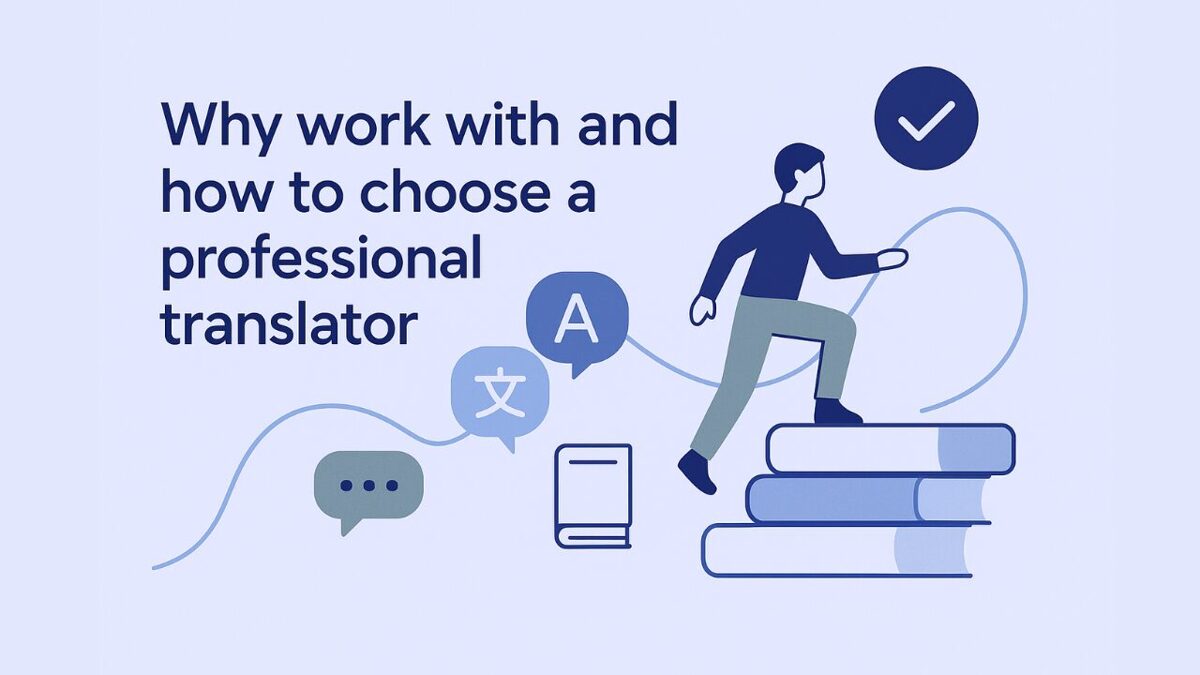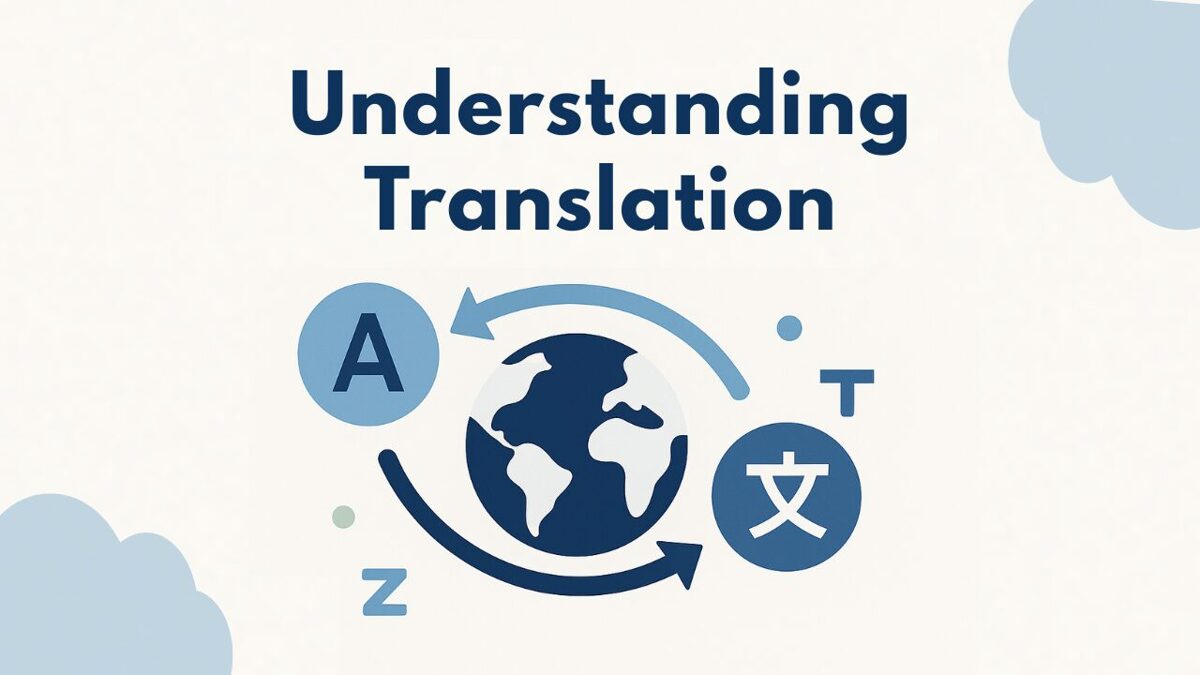Why work with a professional and how to choose a translator

Many people
speak one or more foreign languages, and lots of AI and machine translation
tools are available. Yet, many scenarios call for professional translation
services, whose quality can make or break the effectiveness of the translated
texts. Continue reading to learn why you should work with a professional and how to choose a translator based on your needs and goals.
Table of Contents
- Can bilinguals translate important texts?
- Which qualifications or certifications does a translator need?
- How to find a good Italian translator
Can bilinguals translate important texts?
“It takes more than having two hands to be a good pianist. It takes more than knowing two languages to be a good translator.”
This quote from François Grosjean makes it clear that speaking one or more foreign languages isn’t enough to be a good translator. While it may be difficult to resist the temptation to trust your translation to polyglot employees, friends or cousins in order to save money, having important texts translated by non-professionals can have detrimental effects. And by “important texts,” I mean anything from customer-facing presentations to official documents, from user manuals of appliances to websites that serve as the window of your brand.
It doesn’t matter how well a person understands what’s being said in another language, if their translated text reads awkward, features grammatical errors or isn’t fit-for-purpose.
To translate important texts into Italian, for example, it’s essential to be aware of:
- Italian grammar rules
- Italian orthographic rules for published texts (which are different from private informal text messages sent to random friends or any other private text)
- What’s normal to find in an Italian text of the same category/type/genre as the text that needs translating
- What the Italian readers expect in a text of the relevant type
- The most effective strategies to reproduce the desired effect in the target audience (e.g. convincing them to buy your products)
- And many other key aspects related to the Italian language and culture
To craft a good translation to be used in high-stakes scenarios, understanding and speaking two languages isn’t enough to achieve the desired outcomes. There are many more skills needed to produce a text that is fit for its purpose, audience and place of reception. And a good professional translator masters them.
Which qualifications or certifications does a translator need?
How to choose a translator? When looking for the best translator, you may wonder what qualifications or certifications they should have to be considered skilled and reliable. That’s a reasonable question, but the answer isn’t straightforward. As for most questions you may ask a translator, the answer is: “It depends!”
There are multiple certifications offered by local or international professional associations. For instance, the American Translators Association offers a certification that they claim to be “the only widely recognized measure of competence for translation in the U.S.” However, a large number of excellent translators do not have certifications of this kind, as they involve a high cost that may be perceived as unnecessary, depending on the market or type of clients they work with.
What may be a good sign of expertise, however, is the completion of an MA in Translation or another similar qualification. These make it clear that the translator has completed some translation-specific training instead of improvising, but again, I know excellent professionals with years of experience who don’t hold an MA in Translation and have just completed other sorts of training. If you are wondering, I do hold an MA in Translation Studies, from the University of Birmingham.
How to find a good Italian translator
How to choose a translator, then? There are a few tips you may follow:
- Prioritize native speakers of the target language. For instance, if you want to translate your texts into Italian, look for a professional from Italy or Switzerland, based on the country you need to communicate with.
- Look for credible profiles. Does the translator have a strong online presence? This doesn’t mean appearing on every social media available, but having a few profiles with clear information. For instance, I mainly focus on my website and LinkedIn profile.
- Explore what they can offer, from years of experience to areas of specialization. Seniority doesn’t equal professionalism, but you may want someone with at least a couple of years of practical experience. And don’t forget to check if they can cover the field you need help with! An excellent medical translator may have no idea of how marketing texts work and vice versa. And if you need the translation of an official document, you should check what’s accepted in the country of reception. For instance, Italian government bodies require sworn translations.
- Search for reviews and recommendations. What’s the feedback shared by other people the translator has worked with? You may find some reviews on LinkedIn, on Google or in the testimonials section on their website.
- Read something about them. They’re sure to share some information on their profiles/website, so you can check if they sound like someone you would like to collaborate with. Remember: you’re looking for a trusted partner who’s a pleasure to work with!
- When you first contact them, try to understand if they are responsive, approachable and communicative. If they want to learn more about your needs and goals, and ask several questions, that’s a very good sign. Remember: a translator must align with your objectives and be focused on your success.
These are just a few tips, but they may be a good starting point. If you’re looking for a reliable Italian translator for your English/Spanish/French texts, explore my website or check my LinkedIn profile to see how I can help! From marketing content to e-learning materials, from travel & tourism texts to SEO for the Italian market, I’ll be happy to hear from you and discuss how we can partner up to achieve your goals.
The basics of translation: what it is and the truth behind common myths

We’re surrounded by translated texts, from appliance user manuals to software user interfaces, from international brands’ product descriptions to food labels. But what is translation? And what are the most common misconceptions about it? Keep reading to learn the basics.
Table of Contents
- What is translation?
- What’s the difference between translation and interpreting?
- Everyone speaks English: why should I translate my content into other languages?
What is translation?
In linguistics, translation is the process of converting verbal content from one sign system to another, where a sign system can be a natural language or a nonverbal system made of symbols, gestures or other elements. This definition uses some linguistics jargon, but I promise that I’ll keep technical terms to the bare minimum from now on!
Technically speaking, there are three types of translation: intralingual, interlingual and intersemiotic:
- Intralingual translation occurs within the same language and allows people to express something in different words while preserving the original meaning.
- Interlingual translation involves the conversion of a text from one language to another; for example, from English to Italian.
- Intersemiotic translation occurs between different sign systems; for example, from road signs to words.
Normally, when talking about translation, we refer to the interlingual translation process of written texts. This means that written words are converted from one language to another (for instance, I translate from English to Italian, from Spanish to Italian and from French to Italian) in such a way that the original meaning is preserved and made understandable to people who speak a different language from the one used in the original text.
What’s the difference between translation and interpreting?
“Oh, you’re a translator! That is so difficult! As a speaker of Italian and English, I find it very hard to ‘translate’ what my Italian friends don’t understand when there’s someone speaking in English! You must be quick and remember it all!”
“I would need an English-to-Italian translator for a business meeting next week, in Rome, from 9 am to 12 pm local time. Would you be available?”
These types of statements are not uncommon, but they reflect a common misconception about the translation profession. If you have no experience in the field, you may think that “translators” “translate” oral speech simultaneously as part of their everyday work. And you wouldn’t be the only one: this is the most widespread misbelief about translation.
Are you confused? To put it very
simply, a translator’s output is written. Very schematically:
- Translators’ output is written.
- Interpreters’ output is oral or signed.
I prefer to focus on output rather than input, as audiovisual translation may pose a further challenge for those struggling to understand the difference between translation and interpreting. For example, when translating for dubbing, the translator’s direct output is a written text that will be transformed into speech at a later stage; and even when subtitle translators work from an audio or video without any script, their direct output (i.e., subtitles) is written.
This means that:
- If you need a written text, you should look for a translator.
- If you need someone using their voice to help you understand what’s being said, you need an interpreter.
Everyone speaks English: why should I translate my content into other languages?
That’s a very frequently asked question, so I’ll be happy to provide an answer. You may think that, as a translator, I’m biased. But real-world data confirm the importance of translation in our globalized world.
First, saying that everyone can speak English is an oversimplification. While English is used internationally and studied by people from all over the world, there are many who don’t understand it proficiently. For instance, English is a mandatory school subject in Italy, but only a small percentage of Italians are fluent, while many people have basic skills only.
Apart from bridging the language gap, translation plays a crucial role in the way texts are received, perceived and acted upon. If someone needs to buy something online, they’ll prefer online shops in their native language. Having access to resources in one’s language reduces cognitive efforts and frees one’s mind for more meaningful things, such as making buying decisions, appreciating product descriptions, evaluating a brand’s reliability or, more simply, being captivated and persuaded by the written content.
And talking marketing, it’s important to speak your audience’s language. Clients and prospects want to feel understood and cared about. They look for experiences that feel customized. This means that you must get closer to them, and if you serve different countries, one way to do so is by speaking their language.
Professional translation tends to be mistakenly underrated, but it plays a crucial role in our globalized world. It eliminates unclarity, fosters connections and allows us to overcome borders. Do you want to learn more about this fascinating profession/type of service? Explore my website or check my LinkedIn profile!
